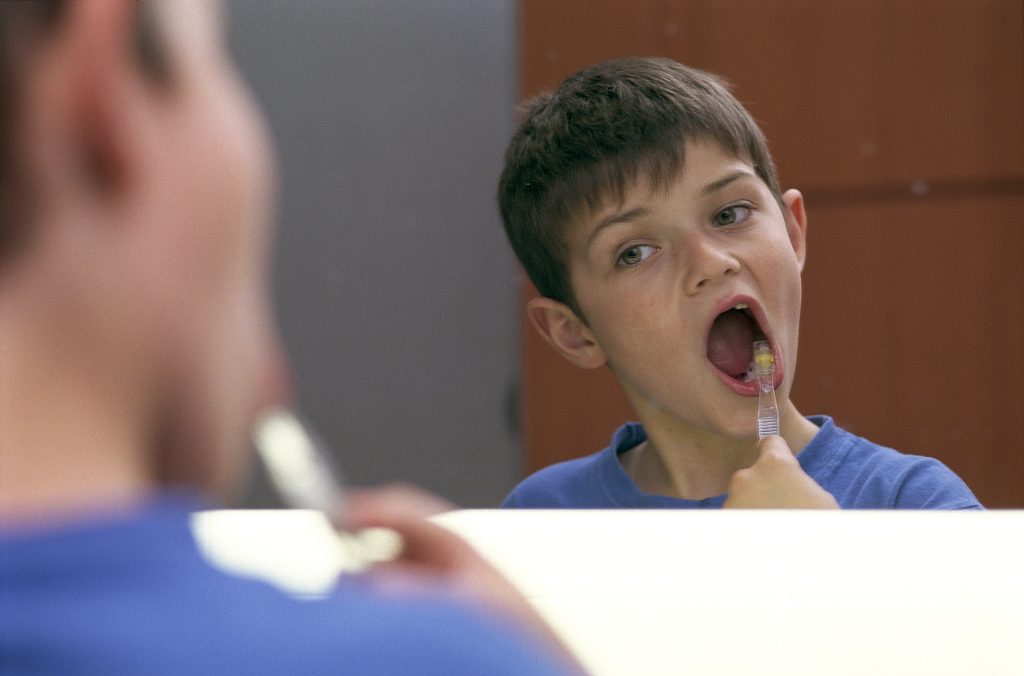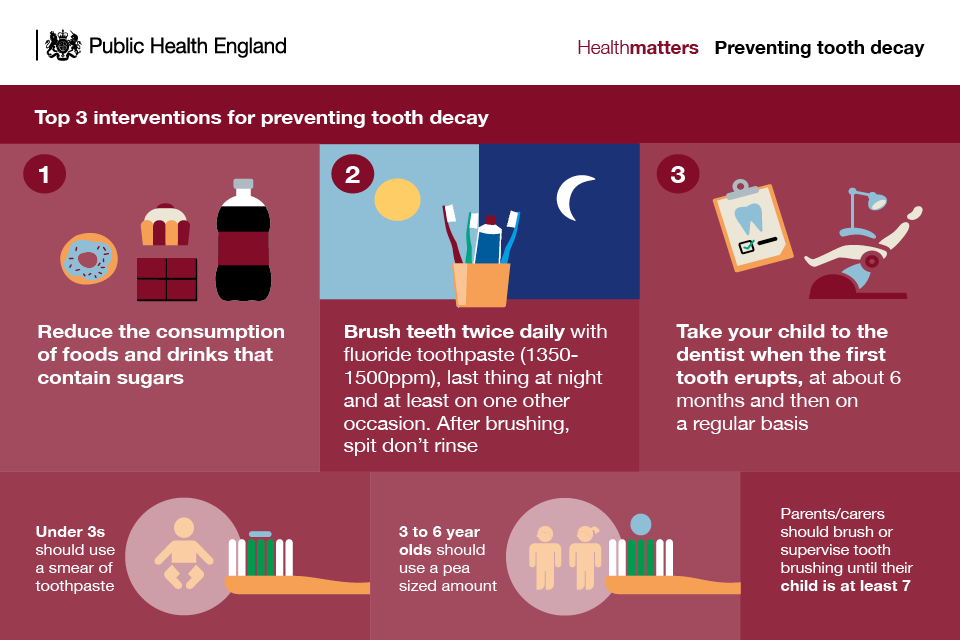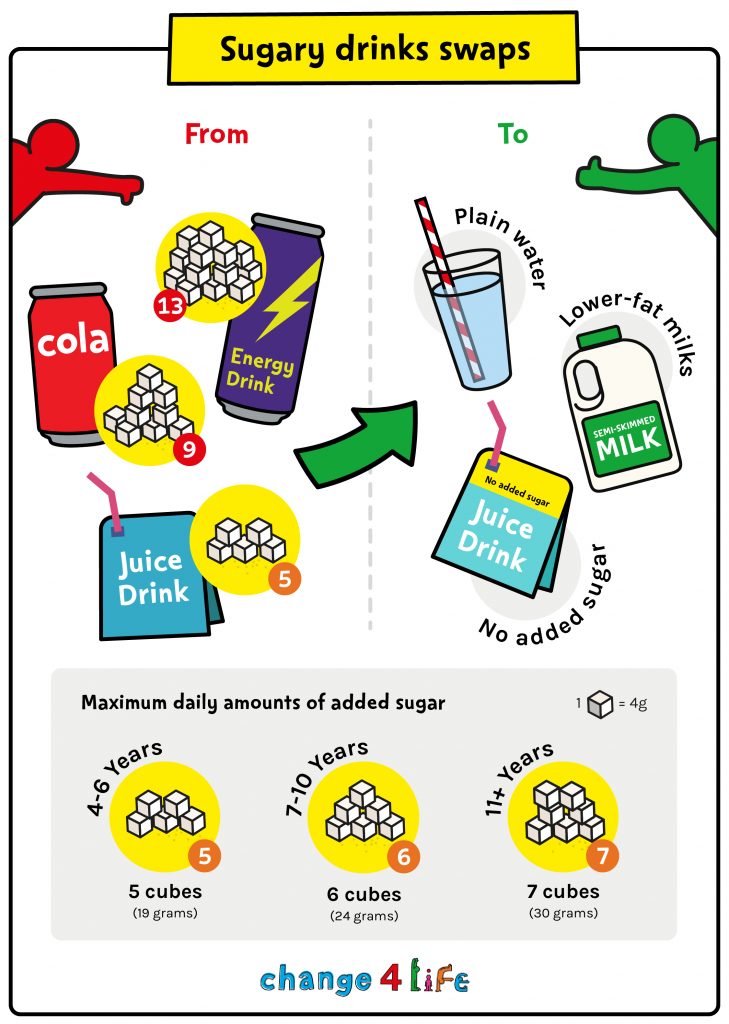
Too many children experience the pain and discomfort of tooth decay. Not only does this cause difficulties eating, smiling and sleeping, this sometimes results in teeth being removed under general anaesthetic. Latest figures from PHE reveal a child in England has a rotten tooth removed in hospital every 10 minutes. That’s almost 40,000 a year.
What is tooth decay?
When we consume sugary foods and drinks, this causes the bacteria in our mouths to produce acid. This acid can begin to break down the surface of the tooth, causing holes known as cavities. This can happen for both children and adults.
When these holes appear in the enamel, the plaque and bacteria can reach the softer, bone-like material underneath. Without treatment, the nerves can be exposed to bacteria, often casing painful toothache. In some cases, the bacteria cause a dental abscess and the infection can spread into the bone.
Once the decay reaches a certain stage, the tooth cannot be saved and will need to be removed. For young children, this can mean unnecessary pain and days off school – those admitted to hospital to have their teeth taken out are estimated to miss around 60,000 school days a year combined.
For older children, this can also mean the loss of permanent adult teeth which could cause further problems their whole life, including lack of confidence.
What are the signs of tooth decay?
Tooth decay often causes pain – this can be a continuous pain or occasional sharp pain without an obvious cause. Children may not always tell you when they’re experiencing pain and discomfort, so parents can look for other common signs of tooth decay:
- Grey, brown or black spots appearing on the teeth
- Tooth sensitivity – tenderness or pain when eating or drinking something hot, cold or sweet
What you should do if you think your child has tooth decay?
If you think your child has tooth decay, arrange an appointment with their dentist as soon as possible. Spotting early signs of decay is also important to prevent further damage, as many children with tooth decay have an average of 3 or 4 teeth affected. It’s also important for them to visit their dental team regularly, so they can have preventive treatment and advice – tooth decay can be detected and is much easier to treat in its early stages.

How can tooth decay be prevented?
Tooth decay is the most common reason for hospital admissions in 5 to 9 year olds; however we know it is mostly preventable if we make some simple changes:
- Cut down on foods and drinks high in sugar. One way to doing this is to swap sugary drinks for no sugar alternatives, including water and lower fat milks. Visit Change4Life for some easy drink swaps and helpful tips. Limit fruit juice and smoothies to a total of 150ml per day and only consume with meals – they count as a maximum of one portion of our 5 A Day.

- Brush twice a day with fluoride toothpaste (once before bedtime and once during the day) and remember to ‘spit not rinse’, as rinsing washes away the protective fluoride. Brushing should start as soon as the first tooth appears and children should be supervised up to the age of seven.
- Take children to the dentist as soon as their first tooth appears and go as often as their dentist recommends.
To help busy families cut back on sugar, download the Change4Life Food Scanner app, which reveals the sugar, salt, saturated fat and calories in everyday foods and drinks. Families can have fun ‘zapping’ the barcodes while they’re in the supermarket. Alternatively, you can look at front of pack labelling and should aim for mostly ‘greens’ and ‘ambers.’

1 comment
Comment by Sigrid Gibson posted on
Toothbrushing should possibly come before "cutting down on sugary food and drinks". Sugar is an important cause but frequency and time of day is more important than amount. Starchy foods can also cause tooth decay, especially if they cling to teeth.